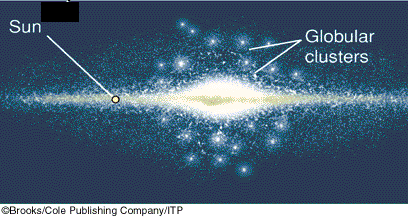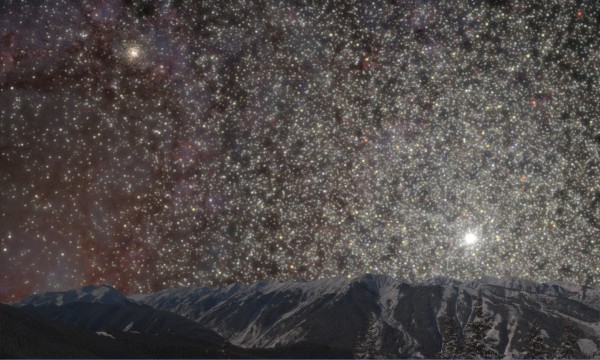
Astronomers are talking again about a fascinating and long-pondered question. That is, are globular clusters – known to contain the oldest stars in our Milky Way galaxy – a possible home to advanced civilizations? At a meeting this week in Kissimmee, Florida, Rosanne Di Stefano of the Harvard-Smithsonian Center for Astrophysics presented new arguments explaining why she thinks it’s possible.
It makes sense, in a way, that these clusters might contain the galaxy’s oldest lifeforms. That’s because these densely packed, highly symmetrical clusters – which might hold a million stars in a ball only about 100 light-years across – are themselves so old.
While the rest of our Milky Way was still flattening out into a disk, globular clusters were already forming stars. About 150 globular clusters now can be seen to orbit the Milky Way’s center. They’re thought to have formed about 10 billion years ago, on average, in contrast to our sun’s age of only about 4.5 billion years. Astronomers have enjoyed wondering whether ancient civilizations might inhabit planets orbiting stars in these very old clusters.
But planets are the rub. So far, only one planet (labeled PSR B1620-26, nicknamed Methuselah) has been found in a globular cluster.
The stars in these clusters are known to contain fewer of the heavy elements (like iron and silicon) needed to construct planets, and lifeforms. Astronomers refer to stars like these as metal-poor, while stars like our sun – second-generation stars that do contain heavy elements forged in earlier generations of stars – are said to be metal-rich.
Still, Rosanne Di Stefano said at a press conference on January 6, 2016:
A globular cluster might be the first place in which intelligent life is identified in our galaxy.
Di Stefano and her colleague Alak Ray of the Tata Institute of Fundamental Research in Mumbai have several theoretical arguments to make. They’re basing the arguments on what we now know about exoplanets – planets known to orbit distant stars elsewhere in our Milky Way.

Their statement said that:
It’s premature to say there are [few] planets in globular clusters.
For one thing, they said, exoplanets have been found around stars only one-tenth as metal-rich as our sun.
What’s more – in contrast to Jupiter-sized planets, which are found preferentially around higher-metal stars – smaller, Earth-sized planets orbit both metal-rich and metal-poor stars.
Lastly they address the question of the stability of planets in globular clusters. The idea has been that – since stars in these clusters are so crowded together – one passing star might disrupt another’s star’s planetary system, flinging its worlds into interstellar space. However, according to these scientists:
… a star’s habitable zone – the distance at which a planet would be warm enough for liquid water – varies depending on the star. While brighter stars have more distant habitable zones, planets orbiting dimmer stars would have to huddle much closer. Brighter stars also live shorter lives, and since globular clusters are old, those stars have died out.
[That means that the] predominant stars in globular clusters are faint, long-lived red dwarfs. Any potentially habitable planets they host would orbit nearby and be relatively safe from stellar interactions.
Di Stefano suggested that:
Once planets form, they can survive for long periods of time, even longer than the current age of the universe.

If habitable planets can form and survive in globular clusters, and if life were to take hold on them, what might that life be like? These astronomers said:
Life would have ample time to become increasingly complex, and even potentially develop intelligence.
Such a civilization would enjoy a very different environment than our own. The nearest star to our solar system is four light-years, or 24 trillion miles, away.
In contrast, the nearest star within a globular cluster could be about 20 times closer — just one trillion miles away. This would make interstellar communication and exploration significantly easier.
Di Stefano and her team called the relative ease of space travel and communication between stars in these clusters the globular cluster opportunity.
The idea gives rise to notions of not just one, but whole networks of interconnected alien civilizations.
Great for science fiction, but true in fact?
So far, from the globular clusters themselves … only silence.

Bottom line: This week, at the American Astronomical Society meeting in Kissimmee, Florida, astronomers Rosanne Di Stefano of the Harvard-Smithsonian Center for Astrophysics and her colleague Alak Ray of the Tata Institute of Fundamental Research in Mumbai presented theoretical arguments for the presence of possibily habitable planets in globular star clusters.











